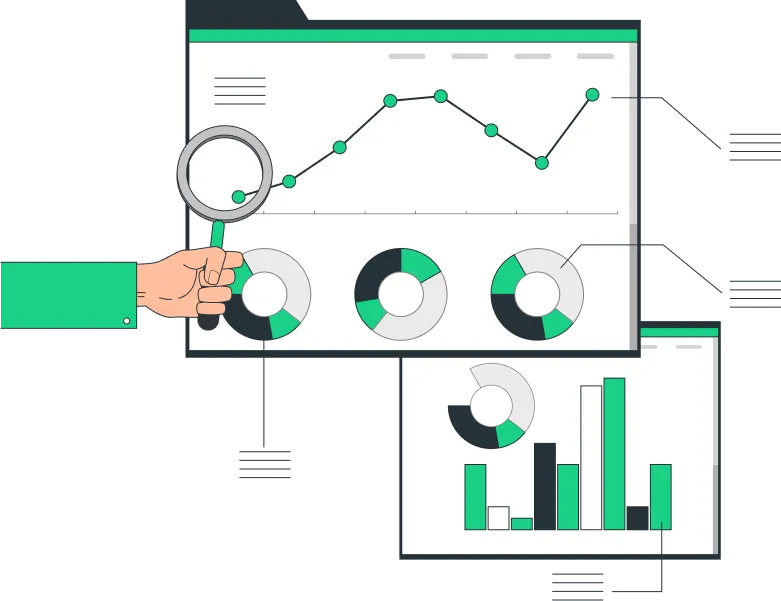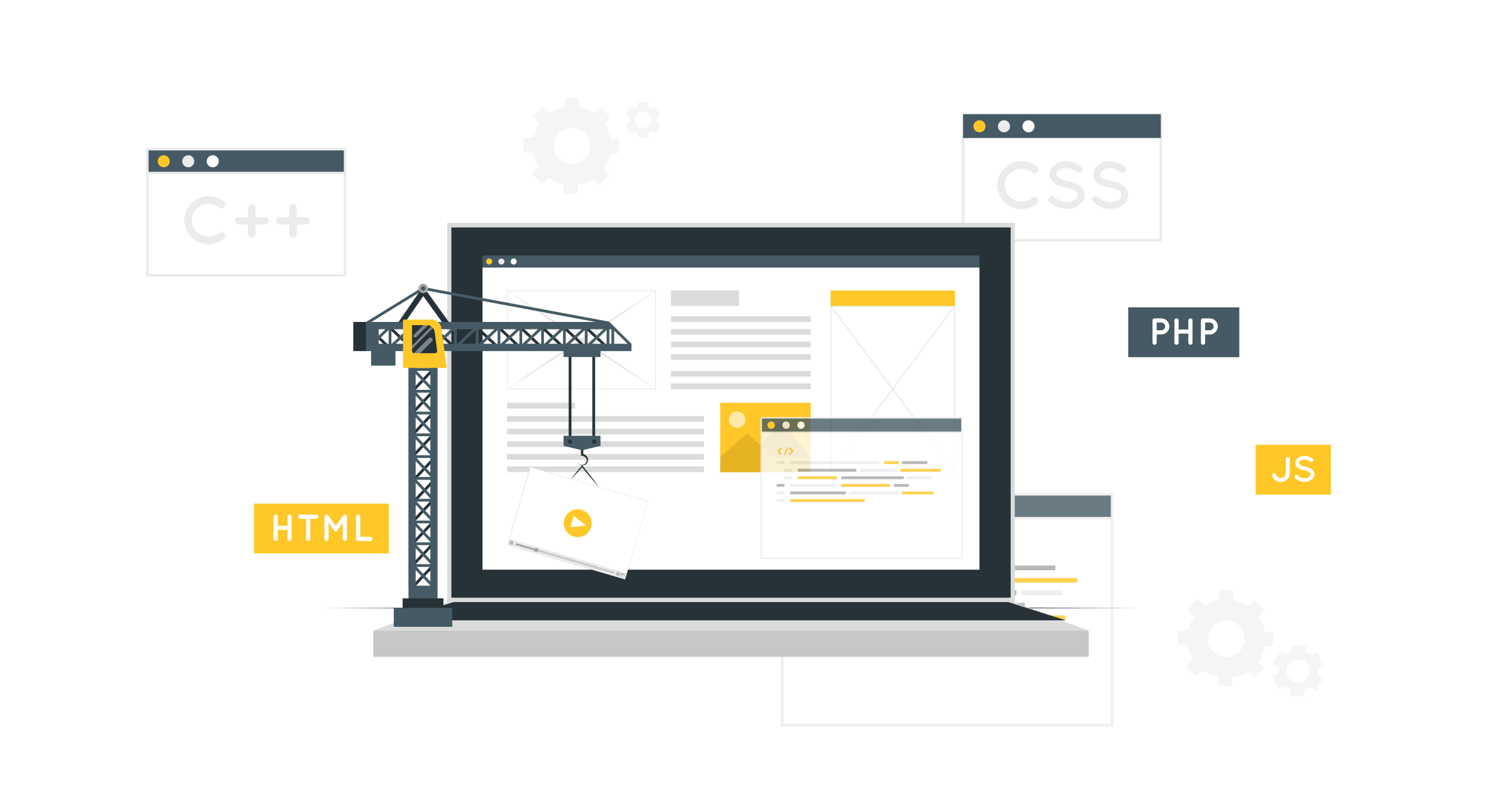Website Development Stages
Creating a website is a multi-stage process that requires careful planning and execution. From idea to the finished product, a website goes through several key stages, each of which plays an important role in its successful operation. In this article, you will learn about the main stages of website creation — from the initial idea and defining the target audience to supporting and maintaining the finished project.

Analysis of the Primary Target Audience and Competitors
Before starting the development of a website, it is important to conduct a thorough analysis of the primary target audience and competitors. This stage allows you to better understand the needs and preferences of your target audience and also study the current market position among competitors. Analyzing the target audience involves studying its demographic characteristics (age, gender, location), behavioral patterns (preferences, interests, needs), and psychographic factors (values, lifestyle, beliefs). This helps formulate a content and design strategy that will appeal to the end user. In parallel with audience analysis, it is necessary to assess the competitors of the future project. This includes analyzing websites, products, services, marketing strategies, and advantages. Studying competitors helps identify their strengths and weaknesses, allowing you to develop a unique proposition and strategy for your own web project.
Setting Goals
The stages of website development include goal setting. The task is to determine the specific results you want to achieve with your website. Among the main goals of creating a website are:
- Informational — providing information about the company, products, and services to customers;
- Commercial — increasing sales and conversion rates;
- Image-building — enhancing brand recognition and customer loyalty;
- Social — supporting users and creating an active community.
The goal should be specific and measurable, as well as provide the ability to track progress and results over time. It is important to implement relevant tasks for your business to increase the effectiveness of its operation when creating a website to attract the attention of the target audience.
Development of Technical Specification
The technical specification is a document that describes the requirements for the functionality, design, and technical characteristics of the website. Among the key stages of creating a technical specification for website development are:
- Project description: includes a brief plan and description of the project, its goals and objectives, and main implemented functions.
- Functionality requirements: describe all functions and technical capabilities that should be implemented on the website for user convenience.
- Design and user interface: at this stage, requirements for the website's design are specified: color scheme, overall style, user interface.
- Technical requirements: to create a good website, it is necessary to determine the main technical details and technologies: programming languages, databases, hosting, security parameters.
- Website structure: at this stage, it is necessary to carefully plan and create the website's structure: main sections, pages, their interrelation.
- Content management: if content is provided on the resource, it is important to consider the features of interaction and work with it.
- Testing requirements: describe the process of testing the finished software product.
- Deadlines and budget: it is necessary to determine all organizational issues and allocate resources for website development.
Developing a technical specification is a lengthy process that requires attention to detail. The quality of its preparation determines the further implementation of the website development project.
Design and Prototyping
Design and prototyping are stages of website development where its structure, functionality, and appearance are determined. With their help, it is possible to create layouts and prototypes for the preliminary presentation of the appearance of ready-made website pages before starting actual development. This is necessary for presenting the work to the client. The work order at this stage is as follows:
- During the design stage, the overall structure and functionality of the finished website are determined by the designer for visual presentation to the client. This includes creating a navigation scheme, defining main sections and pages, as well as functional elements. At this stage, designers create layouts to visually represent the resource.
- Prototyping involves creating interactive models of the website, allowing testing its functionality and user interaction. At this stage, layouts and prototypes with detailed elements similar to the finished product are created. Prototypes help identify potential errors before programming begins.
Design plays an important role in the software product development process, allowing the client to envision a model of the finished website for error correction at early stages.
Stage of Design and Layout Development
The creation of layouts involves working on the visual representation of the future resource. This is an important stage where the overall style, appearance, and user experience of the site are determined. At this stage, the following tasks are performed:
- Studying design trends in websites and highlighting key ideas. It is important to begin by studying design trends in websites and identifying key ideas for implementing the specific project.
- Identifying main design elements and developing conceptual layouts. The next step involves identifying the main design elements, developing conceptual layouts, and sketches to visualize the appearance of the website.
- Creating layouts. Creating layouts is a lengthy process that involves designing website pages. Layouts are created by designers using graphic editors such as Adobe Photoshop, Sketch, or Figma.
- Creating prototypes to demonstrate user interaction. Creating prototypes allows demonstrating user interaction options with the website.
- Reviewing and making changes based on feedback. After completing the layouts and prototypes, a review is conducted, and necessary changes are made based on feedback from the client or other project team members.

Layout and Business Logic Implementation
Stages of website creation include layout and implementation of business logic. At this stage, programmers write HTML, CSS and JavaScript code based on approved design layouts. Layout involves translating the design into code so that it looks and works as planned in the technical documentation and layouts. This includes adaptive layout so that the site displays correctly on different devices and screens. Special attention is paid to the development of the interface for editing data on the site (administrative panel). It is best when the administrative panel is developed individually for each project, but in some cases ready-made CMS can be used. The first option is characterized by such advantages:
- Full customization for the needs of the project.
- Flexibility and the ability to implement any functions.
- Unique design and convenient presentation of business logic for the user.
CMS is a simpler solution that does not require large expenses. At the same time it is necessary to adjust to the available templates and functions.
The complexity of this stage of website creation depends on the functionality of the website. Simple sites can be built manually, while complex sites will require the use of frameworks and libraries. The more complex the logic of the site, the higher the risk that it may not be understood by users or the user scenario will be missed, so it is necessary to carefully think through the business logic of the site and try to achieve maximum clarity for all those involved in the development and future users of the site.
Integration with accounting systems and services
Integration with accounting systems and services involves combining the website with external systems that record and process user actions. This is necessary for interacting with other applications, increasing functionality, and improving management. For example, integration with CRM, payment systems, and mailing services is possible. These systems can be integrated using APIs or frameworks, followed by configuring the required functionality and conducting testing to ensure functionality.
Content Creation and SEO
These are key development stages that affect the visibility of the site in search engines and its attractiveness to users. Key tasks include:
- creating unique and informative content;
- determining topics and keywords for SEO optimization;
- developing a content plan for scheduling website publications;
- studying user queries and needs when writing content;
- optimizing meta tags, headers, descriptions, URL pages;
- optimizing site loading speed and improving usability;
- conducting competitor analysis and their positions in search engines.
Integrating SEO is very important for improving website development quality and attracting potential customers.
Testing and Launch
Testing and launch are important stages of website development. During the testing phase, all functional and technical aspects of the site are checked, including functionality, compatibility with various browsers and devices, loading speed, security, and more. After successful testing, the website is launched, meaning it is published on the server and available to users on the internet.

Support and Maintenance
Website support and maintenance involve continuous maintenance of its functionality and relevance after launch. This includes timely response to user feedback, error correction, content updates, security provision, performance and SEO optimization, site monitoring, and providing consultations and training for administrators. Support and maintenance are necessary to keep the site operational, meet user needs, and achieve business goals.







